[bb_toc content=''][/bb_toc] [ns_row class="review-inner"][ns_h2 class="sample-title"]24+ Sample Literature Review Outline[/ns_h2][ns_p class="sample-para"][/ns_p][ns_ul][ns_li][ns_alink target="_blank" href="#Literature-Review-Outline" name="INSIDEREVIEWTEMPLATE&h=Literature Review Outline&d=https://www.template.net/editable/88926/literature-review&src=https://images.sample.net/wp-content/uploads/2023/08/Literature-Review-Outline.jpg&f=Word, Google Docs,&size="] [/ns_alink][ns_alink target="_blank" href="#Literature-Review-Outline" name="INSIDEREVIEWTEMPLATE&h=Literature Review Outline&d=https://www.template.net/editable/88926/literature-review&src=https://images.sample.net/wp-content/uploads/2023/08/Literature-Review-Outline.jpg"] Literature Review Outline [/ns_alink]download now[/ns_li][ns_li][ns_alink target="_blank"…
continue reading
20+ SAMPLE Employee Performance Review
-
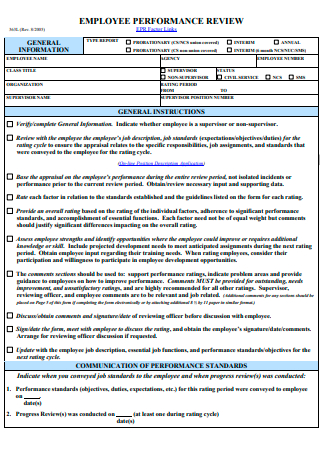
Employee Performance Review Template
download now -
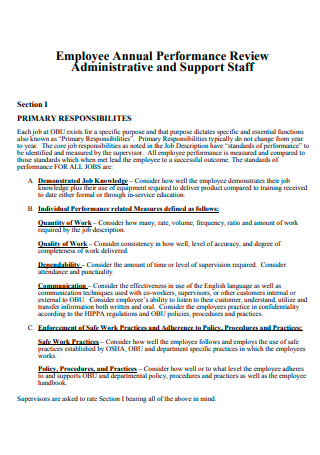
Employee Annual Performance Review
download now -
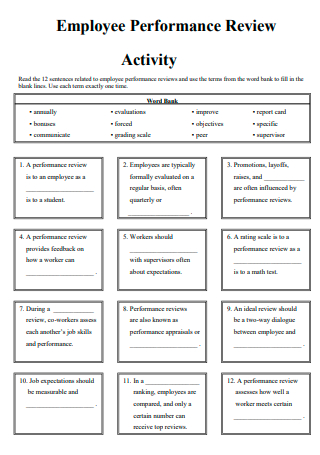
Employee Performance Review Activity
download now -
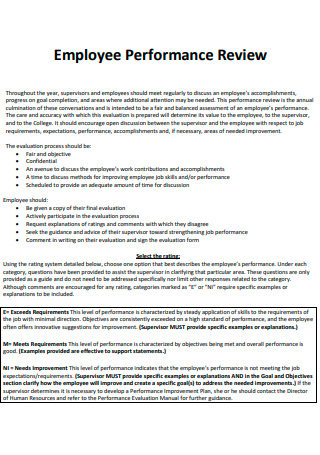
Employee Performance Review Example
download now -
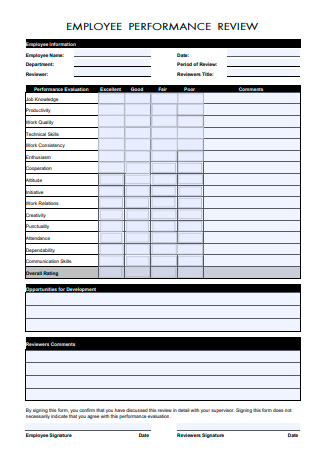
Basic Employee Performance Review
download now -

Student Employee Performance Review
download now -
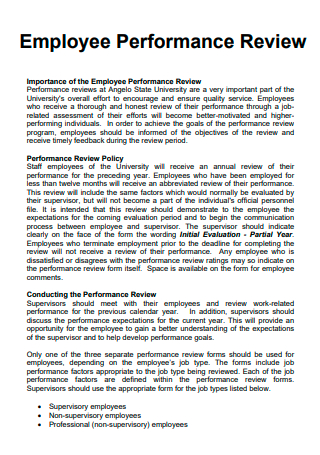
Employee Performance Review in PDF
download now -
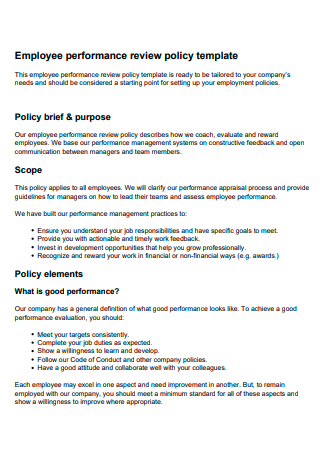
Employee Performance Review Policy
download now -
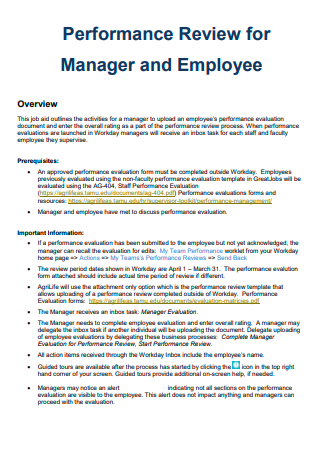
Manager and Employee Performance Review
download now -
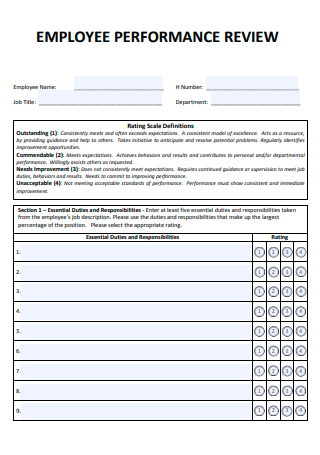
Formal Employee Performance Review
download now -
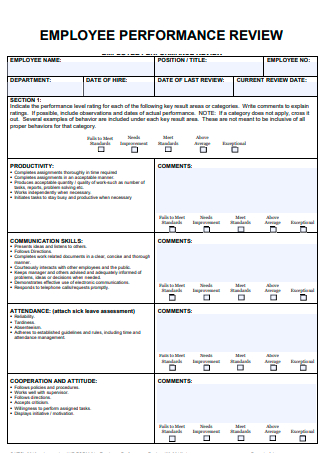
Printable Employee Performance Review
download now -
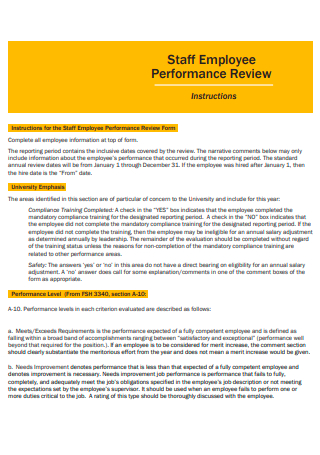
Staff Employee Performance Review
download now -
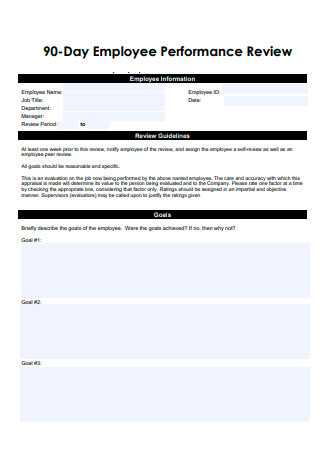
90-Day Employee Performance Review
download now -
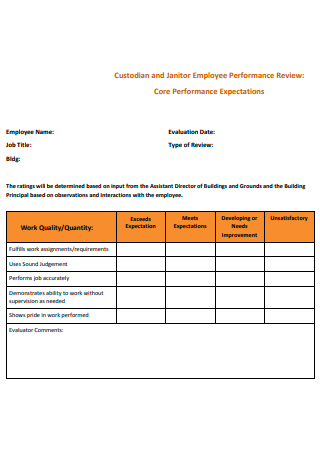
Custodian and Janitor Employee Performance Review
download now -
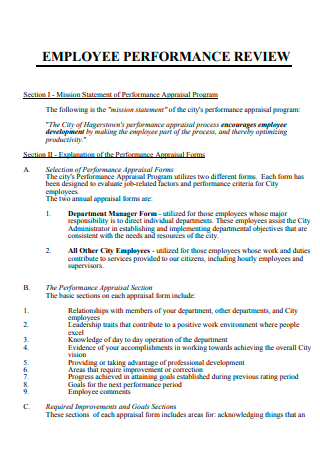
Standard Employee Performance Review
download now -
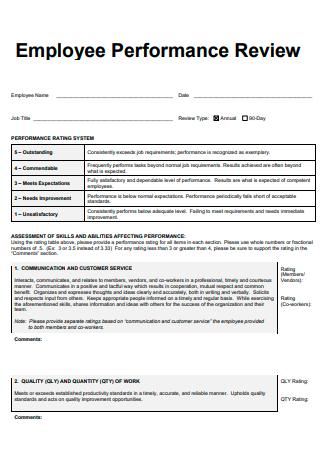
Employee Performance Review Format
download now -
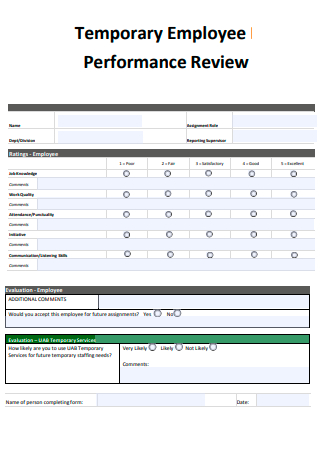
Temporary Employee Performance Review
download now -
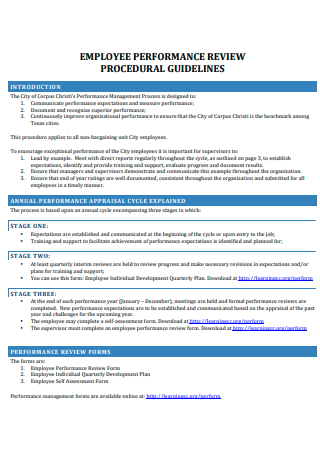
Employee Performance Review Procedural
download now -
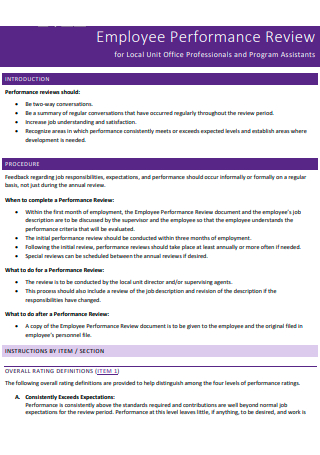
Simple Employee Performance Review
download now -
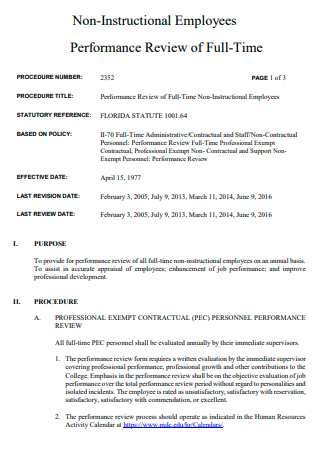
Non-Instructional Employees Performance Review
download now -
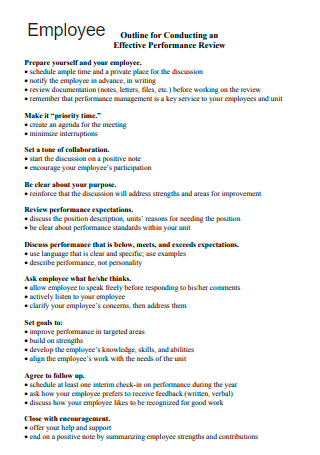
Employee Effective Performance Review
download now
What Is an Employee Performance Review?
An employee performance review is a formal assessment in organizations wherein managers or supervisors evaluates the work performance of employees. Aside from work performance, managers and supervisors also identify the strengths and weaknesses of individual employees, offer necessary and constructive feedback, and set goals for improvement for future performance. Performance reviews also go by different names, including performance appraisals or performance evaluations. Many organizations conduct annual reviews of employee performance in the workplace. Aside from annual appraisals, companies implement more frequent feedback performance management systems that managers and supervisors perform regularly, on a quarterly, monthly, and even weekly basis. If an organization correctly implements the process, performance reviews can help employees to understand the work they are performing well and the areas that need improvement. Employees also understand how their work can affect the goals of the organization and what the organization expects from them. Management that utilizes performance reviews effectively recognizes high-performing individuals, corrects performance issues before becoming unsolvable, communicates expectations, promotes employee growth and development, and facilitates employee engagement.
According to a research study incorporated in the Journal of Industrial and Organizational Psychology, over 95 percent of surveyed managers show dissatisfaction with their performance management systems. Coincidentally, about 59 percent of employees report that performance management is a waste of time, and 56 percent of workers say that they do not receive the necessary feedback for improvement.
Types of Employee Performance Reviews
Many businesses consider conducting performance reviews as the most helpful way to share, collect, and communicate information and feedback with employees. Since performance reviews are still generally used in the workplace by managers and supervisors to guarantee that employees are maintaining the standards of procedure and performance, there are different types of performance reviews that the organization can utilize to conduct the process. The section below defines the various employee performance reviews.
How To Implement an Employee Performance Review in an Organization
Accomplishing employee performance reviews is more than just a single meeting throughout the entire year to go over the past performance of an employee. There are various advantages to writing and implementing annual performance reviews for employees that can impact individuals for a long time. Conducting employee performance reviews improves communication between supervisors and employees, fosters employee engagement, encourages the professional development of employees, and allows opportunities for skills enhancement. It matters how an organization implements performance reviews, and the section below details helpful steps for the implementation of the process.
Step 1: Determine the Type of Performance Review Process the Company Uses
It is the responsibility of management to guarantee that there is a safe space for relaying direct reports and have decent communication and conversations between employees and managers. This is in contrast with an authority-driven space where the only one communicating is the manager. Businesses must start getting into the habit of coaching their direct reports towards employees instead of disciplining them. An organization must also encourage the implementation of a management feedback system to facilitate the feedback process between employees and supervisors better. There are various processes that the organization can implement, including the top-down approach wherein a supervisor meets with the employee formally to discuss insights and insufficiencies to form constructive feedback. Self-evaluation or self-assessments happen when employees write about their challenges and achievements using qualitative and quantitative measurements. A 360 review utilizes input from different individuals, ranging from peers, direct reports, and the employees themselves. A performance rating evaluation utilizes scales and grading systems to measure employee performance.
Step 2: Map Out the Employee Review Process
After selecting the type of performance review that the organization uses, the next step is to outline the entire process to make sure everyone has an idea of what happens. The complexity of the review process depends on the performance review the organization implements. Building the performance review process starts with the HR department defining a timeline and constructing the steps for a successful employee review. Consider the employees in need of training programs, the time to complete the employee assessment, the date when employees receive feedback and the action to take, and the number of individuals involved with accomplishing the assessment.
Step 3: Instruct Employees To Take Self-Assessments and Supervisors to Evaluate Each Employee
Many employees dislike engaging in performance reviews because it is out of their control. To make them feel like they have involvement in the process, make employees complete self-assessments or self-evaluations. The assessment provides an opportunity for employees to share insights about their experiences and growth. It encourages self-reflection and motivates employees to focus on their career growth and goals. Self-assessments also allow superiors to gain insight into the work-life of employees they are unfamiliar with.
Step 4: Conduct a Performance Calibration Meeting
A continuous challenge when it comes to performance reviews is ensuring that the employees undergo review accurately and fairly, following similar standards throughout the process; this is where performance calibrations come into the picture. Performance calibration meetings bring together the managers and supervisors to determine and agree on the specific criteria or key performance indicators to say that employees are high, average, or low performers while evaluating them properly.
Step 5: Deliver the Employee Review and Actualize the Goals and Conditions
Communicating the employee review is a critical step in the entire employee review process because it establishes the goals, attitudes, and goals of employees for the future. Ensure that employees are aware of the meeting to prevent the conversation from being awkward and painful. Begin the review by communicating the accomplishments and achievements of employees for the past year. If employees are performing their work that is beneficial to the organization and their career, a simple reminder can encourage them to continue. Transition into providing constructive feedback on areas for improvement. Coach employees and use the time to set precise and achievable SMART goals towards success.
Step 6: Maintain Communication Even After the Evaluation
Communicating with employees does not end after the performance review. Managers must still regularly meet with employees to check on their progress and receive feedback. During the review process, managers must also evaluate their communication styles and techniques. Having regular contact and communication with employees guarantees that they are working on meeting the expectations. Continuous and regular reviews positively affect the workplace culture. Holding regular yet unplanned meetings with employees helps build the conversation, working towards the annual and formal review process.
FAQs
What does an employee say during performance reviews?
If it is the first time an employee is attending performance reviews, the best thing to do is to talk about the achievements over the past year, discuss different ways of improvement, mention developed skills, ask about company development, and explain work experiences in the workplace.
What do you write in the performance review?
There are different targets when writing a performance review. When writing the contents of a performance review, make sure that each paragraph focuses on a specific category. A manager can write about productivity, problem-solving abilities, learning ability, communication skills, engagement capabilities, cooperation, etc.
What are the different areas of improvement for employees?
Depending on how an employee performs in the workplace, supervisors can pinpoint skills that require improvement. There are different areas of improvement that employees can work on, including:
- Time management
- Communication
- Cooperation
- Listening
- Goal-setting
- Focus and Engagement
- Patience
- Sympathy
- Flexibility
Employee performance reviews are a helpful tool for management and workers to communicate about performance-related issues. There is a misconception that performance reviews only point out the areas for improvement. Many managers and supervisors start performance reviews by pointing out the accomplishments or achievements of employees instead of going right into giving constructive feedback. Many employees also expect their managers, supervisors, and superiors to address and communicate about challenges and difficulties in the workplace in hopes to find solutions for employees. Develop an employee performance review document to help employees improve their skills and take advantage of their strengths. Download the template available above, only from Sample.net.


